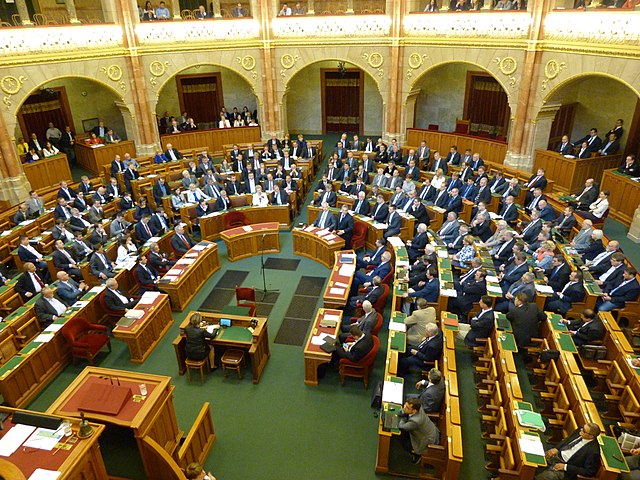Hungarian Parliament Building
The Hungarian Parliament Building, also known as the Parliament of Budapest after its location, is the seat of the National Assembly of Hungary, a notable landmark of Hungary, and a popular tourist destination in Budapest. It is situated on Kossuth Square in the Pest side of the city, on the eastern bank of the Danube. It was designed by Hungarian architect Imre Steindl in neo-Gothic style and opened in 1902. It has been the largest building in Hungary since its completion. The architectural style of the Hungarian parliament building was influenced by the gothic Vienna City Hall, the renaissance elements like the cupola was influenced by the Maria vom Siege church in Vienna.
The main façade as seen from the Danube
Parliament Building in 1905
Parliament Building in 2019
Riverside of the Hungarian Parliament Building at night
National Assembly (Hungary)
The National Assembly is the parliament of Hungary. The unicameral body consists of 199 members elected to four-year terms. Election of members is done using a semi-proportional representation: a mixed-member majoritarian representation with partial compensation via transfer votes and mixed single vote; involving single-member districts and one list vote; parties must win at least 5% of the popular vote in order to gain list seats. The Assembly includes 25 standing committees to debate and report on introduced bills and to supervise the activities of the ministers. The Constitutional Court of Hungary has the right to challenge legislation on the grounds of constitutionality.
National Assembly (Hungary)
Autumn session – 2015






